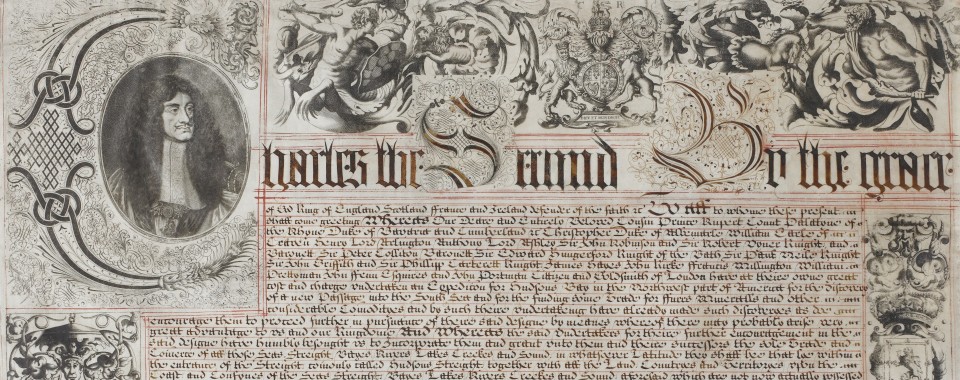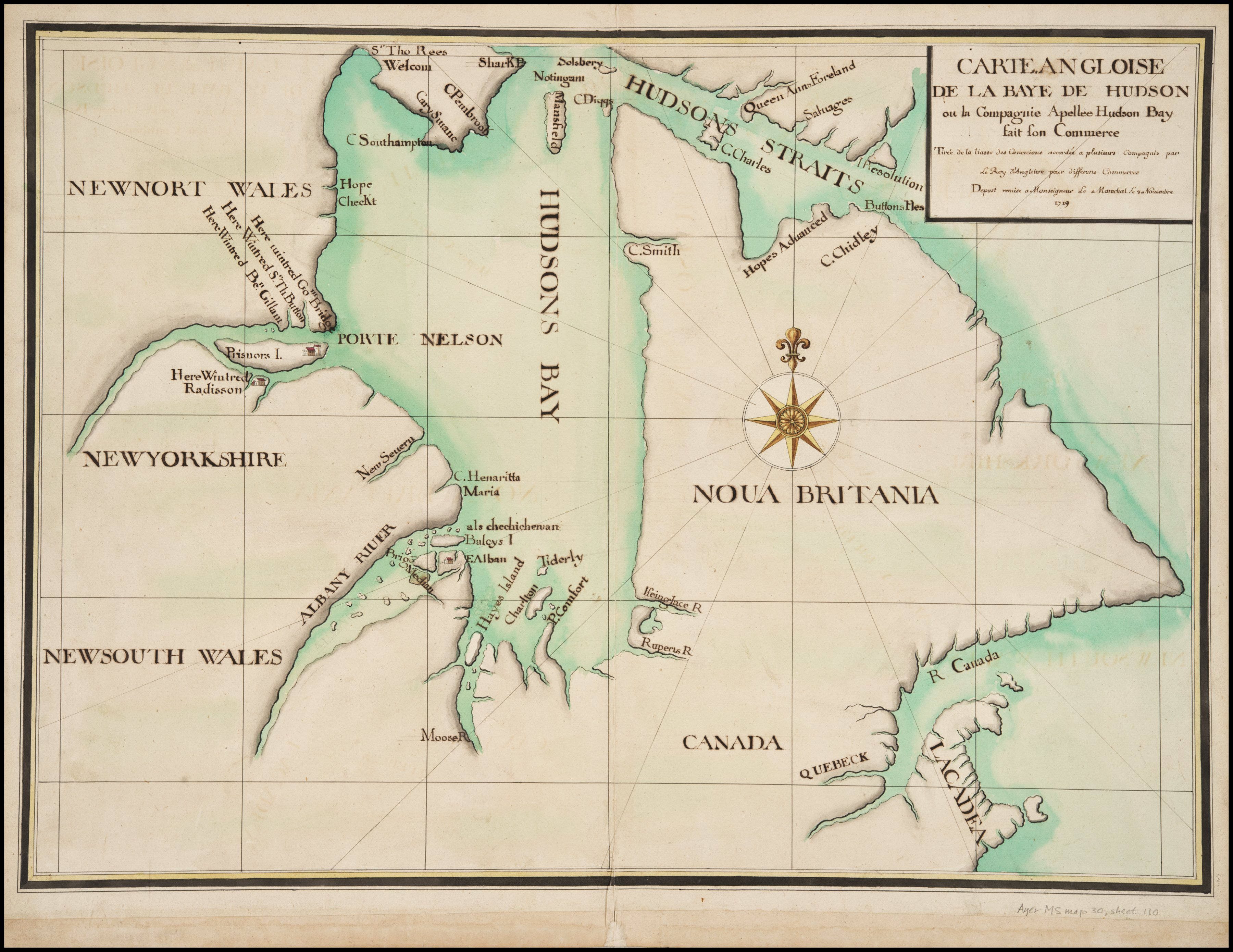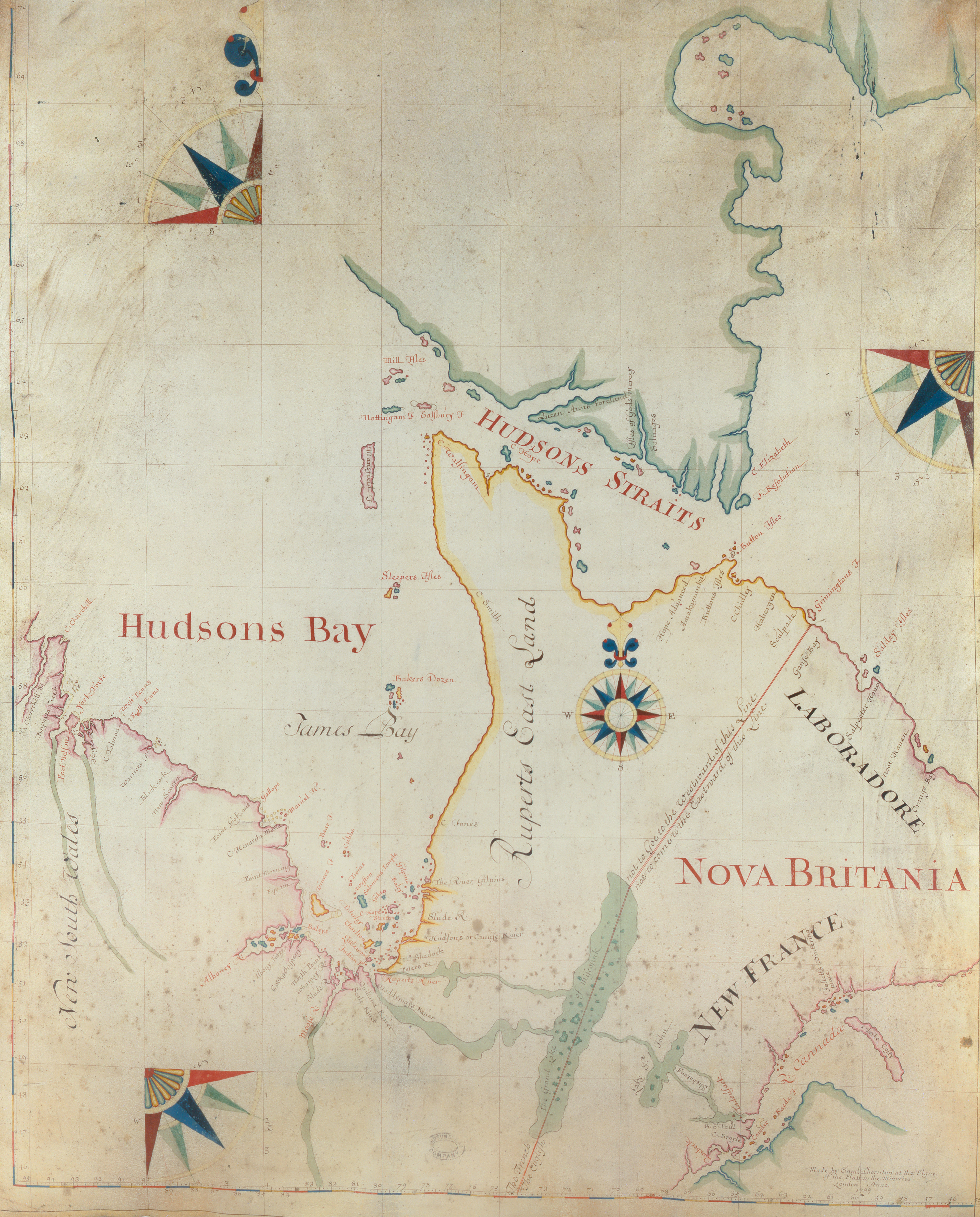Written by guest blogger Scott Berthelette.
On May 2, 1670, a Royal Charter issued by King Charles II of England incorporated the Hudson’s Bay Company (HBC) and granted the new company a presumptive monopoly over the territory whose rivers and streams flow into Hudson Bay—an area that became known as “Rupert’s Land.” In Canadian history, “Rupert’s Land” or the Hudson Bay watershed often evokes images of the era of fur trade competition between the HBC and the Montreal-based North West Company (NWC) during the late eighteenth and early nineteenth century. However, in the period before the British Conquest of Canada of 1760, New France had turned its imperial gaze upon the vast subarctic territory northwest of Lake Superior, which was replete with valuable northern beaver furs, salient Indigenous alliances, and rumors of an expedient Northwest Passage to the Pacific Ocean.

Figure 1.1: On May 2, 1670, a Royal Charter issued by King Charles II of England (pictured) incorporated the HBC and granted the new joint-stock merchandising company a presumptive monopoly over “Rupert’s Land.” Unfortunately, the designation of “Rupert’s Land” and the HBC’s long history in that region has caused many historians to forget that the Hudson Bay watershed also held immense imperial potential for France’s Atlantic empire in the seventeenth and eighteenth century. Hudson’s Bay Company Archives, A.37/1, H.M. King Charles II to HBC: Charter of Incorporation, 1670.
Despite its importance to eighteenth century imperialists, the Hudson Bay watershed has largely been forgotten in French colonial historiography with most published books and articles focusing predominantly on the pays d’en haut (Great Lakes region), the Illinois Country, Louisiana, and the French Caribbean. By combing through French government documents and fur trade records at Library and Archives Canada, Bibliothèque nationale de France, and the Archives nationales d’outre-mer, I argue that the Hudson Bay watershed was not peripheral to the French Atlantic empire. Because of the promise of a prospective Northwest Passage and the lucrative northern fur trade, the Hudson Bay watershed was a salient asset of French empire and not just a territory marginal to the rest of the French Atlantic world.

Figure 1.2: The Hudson Bay watershed represented myriad imperial opportunities for both France and Britain including prime northern furs, valuable Indigenous alliances, and the promise of a Northwest Passage to the Pacific Ocean. The Newberry Library, Edward E. Ayer Digital Collection, Ayer MS map 30 sheet 110, Carte angloise de la Baye de Hudson où la compagnie apellée Hudson Bay fait son commerce, 1719.
My article investigates French imperial ambitions in the Hudson Bay watershed in post-Utrecht North America. While the 1713 Treaty of Utrecht signed between Britain and France had denied access to the Hudson Bay shoreline and the Hudson Strait to France, creative colonial policies allowed the French to curtail the disaster of territorial losses in North America and to maintain an imperial claim in the Hudson Bay watershed. Eschewing Jean-Baptiste Colbert’s previous vision of a “compact colony policy” restricted to the Saint-Lawrence Valley, a renewed French metropolitan and colonial government led by Philippe II, Duke of Orléans and Philippe de Rigaud, Marquis de Vaudreuil sought to challenge the British-run HBC’s monopoly of the northern fur trade and reasoned that the French empire could still expand into the Hudson Bay watershed via the western Great Lakes and Lake Winnipeg without breaching the articles of the treaty.

Figure 1.3: Somewhat ambiguous in its phrasing, French officials construed the Treaty of Utrecht (1713) as having only restored the Hudson Bay shoreline and the Hudson Strait to England, and not the entire drainage basin. French officials reasoned, therefore, that their empire could still expand into the Hudson Bay watershed via the western Great Lakes and Lake Winnipeg without breaching the articles of the treaty. Hudson’s Bay Company Archives, G.2/1, Samuel Thornton, “Map of Hudson Bay and Straits,” 1709.
In order to succeed in North America’s hyperborean regions, colonial officials attempted to co-opt what I have dubbed “backcountry specialists” who circulated throughout the West—coureurs de bois, runaway soldiers, and veteran voyageurs —and to convert them into loyal imperial agents. However, a closer examination of non-French sources, such as the HBC’s post journals and Lakota winter counts, show that backcountry specialists were not unwavering agents of imperial power. Rather, they defied the overarching imperial strategies carefully orchestrated by French ministers and colonial officials, choosing instead to pursue their own agendas in the Hudson Bay watershed. While they initially made it possible for French colonialism to extend into the Hudson Bay watershed, their own ambivalent relationships with the French colonial government and its representatives ultimately fragmented the imperial authority of the French empire in Western North America.

Scott Berthelette is an Assistant Professor in the Department of History at Queen’s University. He researches the history of New France, Indigenous peoples, the Métis, the fur trade, and French-Indigenous relations in North America. Scott completed his PhD at the University of Saskatchewan in January 2020. You can find him on twitter @S_Berthelette.
His latest article in Canadian Historical Review entitled “New France and the Hudson Bay Watershed: Transatlantic Networks, Backcountry Specialists, and French Imperial Projects in Post-Utrecht North America, 1713–29” is free to read for a limited time here.
The UTP Journals blog features guest posts from our authors. The opinions expressed in these posts may not necessarily represent those of UTP Journals and their clients.
Comments on this entry are closed.